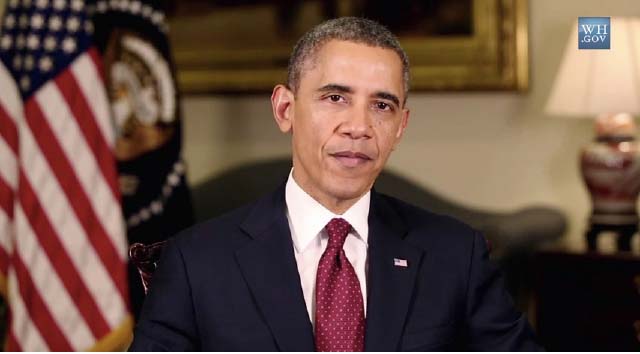The deteriorating security situation prompted US President Barack Obama last week to delay plans to pull American forces out of the country next year, with at least 5,500 troops now due to remain after 2017. Heavy sacrifices were rendered by Afghan soldiers and US-led NATO forces within the past fourteen years to bring in peace and security; however the war continues unabated and both Afghan security personal and civilians suffer strongly.
Additionally, the Equality for Peace and Democracy (EPD) has released that the Afghanistan’s protracted war and the fight against extremism cost the country a staggering $9 billion USD last year. “During the fiscal year of 2014 just over $9 billion was spent on war and fighting extremism.” EPD deputy chief Idris Omarzad is cited as saying. This report was released in cooperation with the United States Institute of Peace (USIP), which says this tally, of $9 billion USD, is a shocking figure and has warned this amount is set to increase this year.
“It is very clear that this year the cost of war and fundamentalism is too high because of ongoing conflict,” a Women’s Right Activist has said. Similarly, analysts speculate that this year’s cost of war will far exceed that of 2014.
A US Congresswoman, Barbara Lee writes, “This war has already cost our nation so much: 2,350 of our brave servicemen and women have made the ultimate sacrifice, more than 20,000 have been wounded and thousands more bear invisible scars. This war has also taken the lives of thousands of Afghans and soldiers from our coalition partners and NATO allies.”
She says that while Afghanistan and the region still face significant challenges, history has shown that there is no effective military solution. As John Isaacs, a senior fellow at Council for a Livable World, wrote: “More troops, more time, more money, more casualties will simply not bring the war to a close.” According to Lee, only an inclusive political solution can bring peace, stability and prosperity to Afghanistan and the region. The future of Afghanistan must be in the hands of the Afghan people. It’s time to bring America’s longest war to a close.
After fourteen years of financial and human sacrifices, there is still neither a proper solution for peace and reconciliation nor an effective strategy to end terrorism. The High Peace Council made no achievements and negotiation failed constantly to bear the desired result. After all, Afghanistan should have already stood up on its own feet financially and militarily. Lee aptly points out that the future of Afghanistan must be decided by Afghans not by foreign soldiers. Afghan officials must either find a key to open the door of negotiation or empower the armed forces to end the war militarily.
I believe that resuming peace negotiation will be tantamount to initiation of the previous game – which may continue for a long time and will end without a positive result. One of the reasons behind this nonstop scenario is the Taliban’s splinter groups. A rift is going to appear among the Taliban’s armed insurgents. Analysts say the recent brief occupation of the northern city of Kunduz has cemented Mansoor’s power, boosting his reputation among foot soldiers and causing the US government and NATO to slow plans for withdrawing their troops.
But a leadership battle within the Taliban could create space for militants loyal to the self-styled Islamic State (IS) to expand their foothold in the region, and could discourage Mansoor from resuming Pakistan-backed peace talks with the Afghan government.
Mullah Abdul Manan Niazi, a spokesman for the anti-Mansoor faction, said a new leader would be chosen within days. “There is one agenda, and that’s to choose the new emir (leader) unanimously and get rid of Mullah Mansoor,” he said.
Niazi said the dissident commanders would not accept Mansour despite the Taliban’s brief occupation of Kunduz earlier this month, their most important military success since the US-led invasion toppled the Taliban government in 2001.
Just weeks after the peace talks, Mansoor was hastily appointed head of the Afghan Taliban when Kabul’s intelligence agency leaked news that Mullah Omar, the reclusive one-eyed founder of the Taliban, had been dead for more than two years.
During that time, Mansoor issued statements in Omar’s name, a subterfuge he said was necessary to unify the insurgency. But many commanders were furious over the deception and refused to accept him. The dissident Taliban faction includes Niazi, a former Taliban provincial governor close to Mullah Omar; Zakir; Mullah Hasan Rahmani and Mohammad Rasool, two Taliban leaders with substantial power bases; and Mullah Abdul Razaq, a former Taliban interior minister. The dissidents say they also have the support of Tayyab Agha, the former head of the political office in Qatar. The Taliban’s shaky harmony and frequent rift which lead to splinter groups narrow the chance of a successful negotiation. In other words, the warring parties do not operate under a single leadership and therefore the agreement of one group to cease militancy will not prevent other parties from fighting. So, political instability will not come to end through negotiation. In spite of this fact, the Afghan President Ashraf Ghani gives the green light for “intra-Afghan negotiation”, but Pakistan pushes to be involved in the negotiation as a facilitator. However, the main question is that why the heavy sacrifices made within more than a decade remains fruitless? It is the government to answer.

